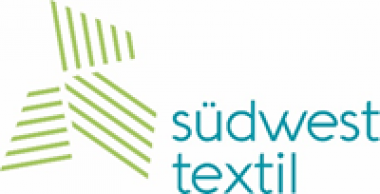Vileda kooperiert mit Dr. Beckmann
Zwei Marken, ein gemeinsames Ziel: Mit innovativen Lösungen die Haushalts- und Textilreinigung einfacher, effizienter und nachhaltiger gestalten. Ab dem zweiten Quartal 2025 bündeln Vileda und Dr. Beckmann ihre Kräfte in einer strategischen Markenkooperation in Deutschland – und bringen smarte Produkt-Bundles auf den Markt, die zukunftsfähige Wasch- und Reinigungsprodukte ideal vereinen.
Im Mittelpunkt der Kooperation stehen durchdachte Kombinationen der Produkte beider Marken: So sind in ausgewählten Verpackungen der Bodenpflege-Highlights von Vileda – wie dem Vileda Turbo und dem Vileda Ultramax Komplettset – künftig die Allzweck Reinigungs-Blätter von Dr. Beckmann enthalten. Auch im Bereich der Wäschepflege profitieren Shopper von der Partnerschaft: Waschmittel-Blätter von Dr. Beckmann werden als Gratis-Zugabe ausgewählten Vileda Wäscheständern beigelegt.
Vileda und Dr. Beckmann: Komplettlösungen für Frühjahrsputz und Wäschepflege
Das Produkt-Sampling unterstreicht, wie effektiv sich die wirkungsvollen Reinigungslösungen von Vileda mit den innovativen Produkten von Dr. Beckmann kombinieren lassen. Die leistungsstarken Bodenwischer von Vileda werden optimal durch die ultraleichten Dr. Beckmann Allzweck Reinigungs-Blätter komplementiert: Während die Bodenwischer von Vileda eine effektive und komfortable Reinigung ermöglichen, verbreiten die Reinigungs-Blätter von Dr. Beckmann einen dezenten Frühlingsduft. Im Bereich der Wäschepflege sorgen ausgewählte Wäscheständer von Vileda für faltenfreies und zeitsparendes Trocknen von bis zu drei Maschinenladungen gleichzeitig – dabei garantieren die wasserlöslichen Dr. Beckmann Waschmittel-Blätter strahlend saubere und angenehm duftende Wäsche.
„Wir bei Vileda entwickeln seit über 75 Jahren Produkte, die die Haushaltsreinigung und Wäschepflege möglichst bequem und zeitsparend, aber auch nachhaltig gestalten. So produzieren wir langlebige Reinigungshelfer, die durch fortschrittliche Lösungen eine ressourcenschonende Haushaltsreinigung ermöglichen. Mit Dr. Beckmann haben wir einen Partner auf Seiten der Reinigungsmittel gefunden, der mit seinem Reinigungs- und Waschmittelblätter-Portfolio diesen Gedanken ebenso vorantreibt", erklärt Chantal Schader, Senior Marketing Manager Consumer & Customer Development bei der Vileda GmbH.
„Dr. Beckmann und Vileda haben nicht nur beide clevere Produkte, die sich ideal komplettieren, wir beide haben auch das gleiche ausgeprägte Verständnis von Qualitätsanspruch, Lösungskompetenz und Kundenzentrierung. Gemeinsam bieten wir somit nicht nur ein hochwertiges und leistungsstarkes Produkt-Bundle an, sondern eine perfekt durchdachte Komplettlösung für einen sauberen Haushalt und reine Wäsche“, ergänzt Marco Buschmeier, Chief Marketing Officer der Dr. Beckmann Group.
Sichtbar durch gezielte Kommunikation
Ein zentraler Bestandteil der strategischen Markenpartnerschaft ist eine vielschichtige, gemeinsame Kommunikationsstrategie. Vileda hebt das Product Bundling prominent auf den Verkaufsverpackungen hervor und begleitet es aufmerksamkeitsstark durch vielfältige POS-Maßnahmen, wie Ellipsen für die Wäschepflege-Produkte und Palettenecken für die Bodenreinigungssets. Social Media Content und gezielte PR-Maßnahmen kommunizieren die Zusammenarbeit reichweitenstark. Dr. Beckmann unterstützt die Kooperation wirksam mit Wobblern, Ellipsen und Displays. Ein weiteres Highlight bildet eine über mehrere Monate laufende Gewinnspiel-Promotion von Dr. Beckmann: Wer seinen Kaufbeleg hochlädt, sichert sich die Chance auf zahlreiche attraktive Preise wie dem Vileda Infinity Flex Wäscheständer. Die Partnerschaft schafft wirksame Kaufanreize und stärkt die Sichtbarkeit beider Marken im Handel.
Vileda































